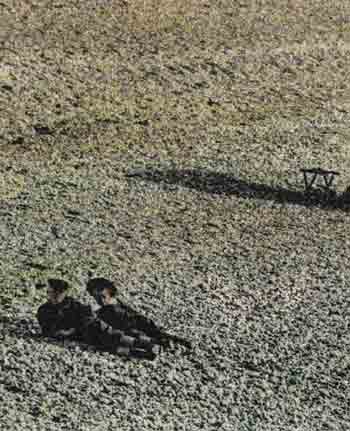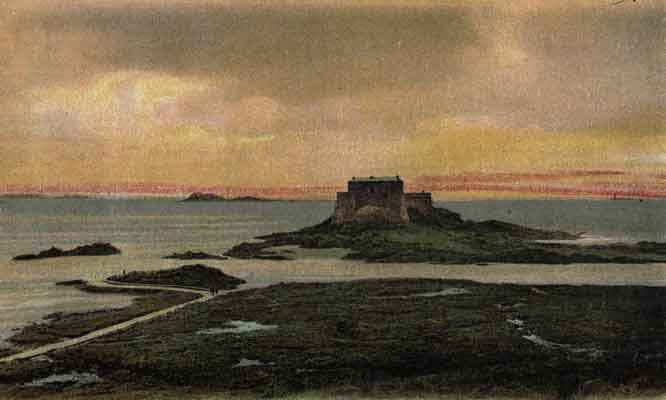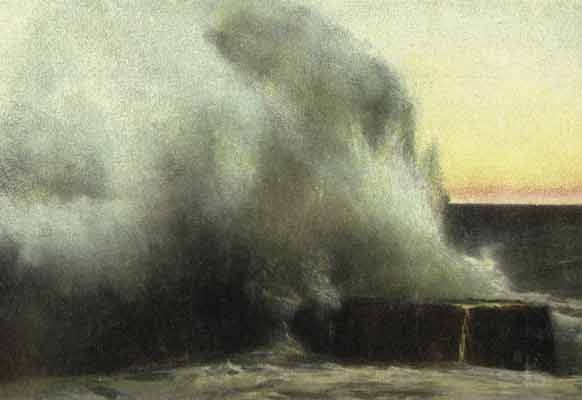A man in a peaked hat and a boy in a round sailor hat lie on the beach at Cayeux on the northern coast of France, in the lower left of the picture. Toward the upper right a dark or black object, hard to decipher, casts a shadow. The rest is beach, possibly sand, perhaps with stones. The surface is a motley of colorčorange, yellow, green, blue, red, black -- as in a pointillist painting, but the colors don't correspond with the colors we would expect. In fact, nothing is truly identifiable, though the scene is recognizable, primarily because of the two human figures. But we don't know anything about their expressions, nor the makeup of the beach, nor the black object. Were it not for the two figures, nothing would register in our minds except the overall patterns. With them, a great deal registers, especially emotionally: the figures themselves, their relative ages and possible relationship, the expanse of beach, time of day, time of year, time, the past, what we might remember about such scenes in summer. The granular makeup of the field is an essential definition of substance, a field in which shadow has as much substance as people and sand.
This is the most elemental and bewitching of Elger Esser's images in the exhibition, all of which are photographic magnifications of old postcards from his collection. I don't know the exact process of printing the postcards, but the reproduction of the original hand-colored photos results in a pattern of color fragments that become evident when the artist magnifies the image by a factor of 30 in this case, more than 200 in others. This screen is as important as what it conspires to show, just as the original hand-coloring aspired to bring the black-and-white image more completely into this world. Water, air, sand, stones, people exist in the grain of the photo, which represents time but is saturated beyond memory, beyond our ability to call up those pictures, except in this way. Particles that comprise the photos and their colors collide with particles that actually make up the matter of the world to inspire another level of perception in which whatever was may still exist

200 Cayeux, 2004.
C-print on DiaSec Face/Forex,
37.375" x 30.375"

